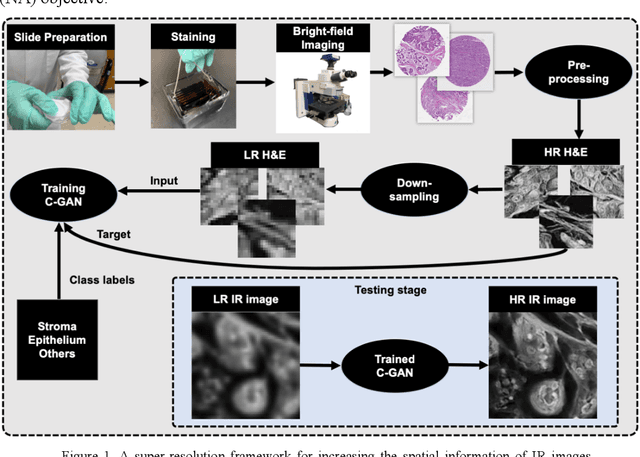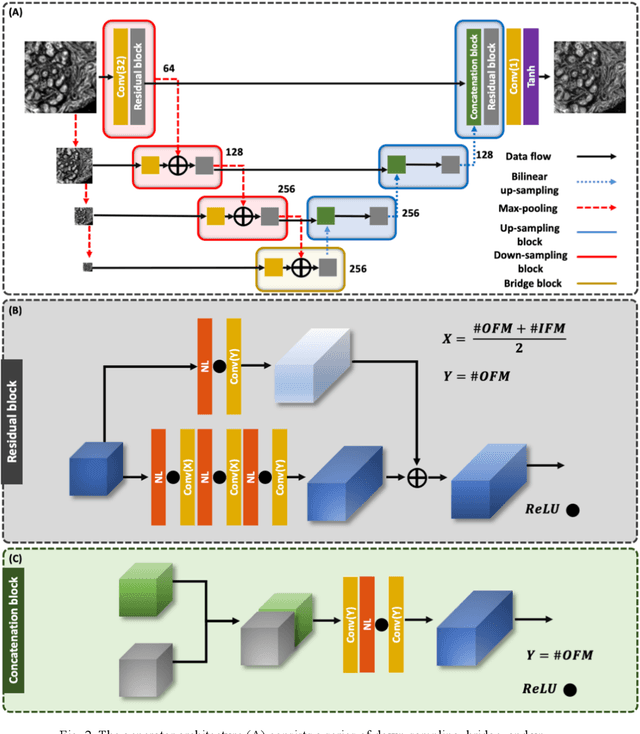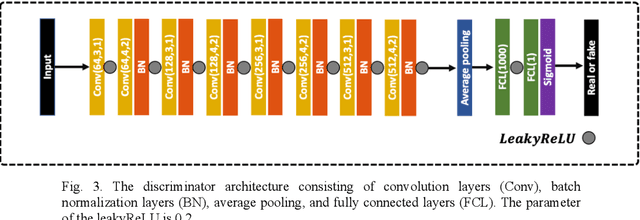Luke Pfister
A deep learning framework for morphologic detail beyond the diffraction limit in infrared spectroscopic imaging
Dec 19, 2019



Abstract:Infrared (IR) microscopes measure spectral information that quantifies molecular content to assign the identity of biomedical cells but lack the spatial quality of optical microscopy to appreciate morphologic features. Here, we propose a method to utilize the semantic information of cellular identity from IR imaging with the morphologic detail of pathology images in a deep learning-based approach to image super-resolution. Using Generative Adversarial Networks (GANs), we enhance the spatial detail in IR imaging beyond the diffraction limit while retaining their spectral contrast. This technique can be rapidly integrated with modern IR microscopes to provide a framework useful for routine pathology.
Transform Learning for Magnetic Resonance Image Reconstruction: From Model-based Learning to Building Neural Networks
Mar 25, 2019



Abstract:Magnetic resonance imaging (MRI) is widely used in clinical practice for visualizing both biological structure and function, but its use has been traditionally limited by its slow data acquisition. Recent advances in compressed sensing (CS) techniques for MRI that exploit sparsity models of images reduce acquisition time while maintaining high image quality. Whereas classical CS assumes the images are sparse in a known analytical dictionary or transform domain, methods that use learned image models for reconstruction have become popular in recent years. The model could be learned from a dataset and used for reconstruction or learned simultaneously with the reconstruction, a technique called blind CS (BCS). While the well-known synthesis dictionary model has been exploited for MRI reconstruction, recent advances in transform learning (TL) provide an efficient alternative framework for sparse modeling in MRI. TL-based methods enjoy numerous advantages including exact sparse coding, transform update, and clustering solutions, cheap computation, and convergence guarantees, and provide high quality results in MRI as well as in other inverse problems compared to popular competing methods. This paper provides a review of key works in MRI reconstruction from limited data, with focus on the recent class of TL-based reconstruction methods. A unified framework for incorporating various TL-based models is presented. We discuss the connections between transform learning and convolutional or filterbank models and corresponding multi-layer extensions, as well as connections to unsupervised and supervised deep learning. Finally, we discuss recent trends in MRI, open problems, and future directions for the field.
Learning Filter Bank Sparsifying Transforms
Mar 06, 2018



Abstract:Data is said to follow the transform (or analysis) sparsity model if it becomes sparse when acted on by a linear operator called a sparsifying transform. Several algorithms have been designed to learn such a transform directly from data, and data-adaptive sparsifying transforms have demonstrated excellent performance in signal restoration tasks. Sparsifying transforms are typically learned using small sub-regions of data called patches, but these algorithms often ignore redundant information shared between neighboring patches. We show that many existing transform and analysis sparse representations can be viewed as filter banks, thus linking the local properties of patch-based model to the global properties of a convolutional model. We propose a new transform learning framework where the sparsifying transform is an undecimated perfect reconstruction filter bank. Unlike previous transform learning algorithms, the filter length can be chosen independently of the number of filter bank channels. Numerical results indicate filter bank sparsifying transforms outperform existing patch-based transform learning for image denoising while benefiting from additional flexibility in the design process.
 Add to Chrome
Add to Chrome Add to Firefox
Add to Firefox Add to Edge
Add to Edge